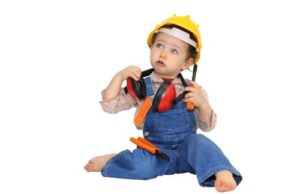 What are Child Labor Laws?
What are Child Labor Laws?
Child Labor Laws are pieces of statutory legislation that involve the legal procedure and process inherent within the ability – and legislative undertakings – pertinent to children in the workforce. Child Labor Laws have become crucial with regard to the standards and practices of the advocacy of both human rights, as well as children’s rights due to the fact that forced or unethical child labor is considered to be an egregious form of both child abuse and child exploitation:
Due to the age of a child – who is typically classified as being a minor, a child is heavily reliant on their respective parents or guardians with regard to the provision of adequate standards and quality of life; as a result, forced child labor is considered to be both a form of abuse and neglect of the safety and wellbeing of that child
An implemented age of consent is a legislative regulatory standard expressing the legal age at which an individual is responsible for their own respective self-sufficiency and decision making; Child Labor Laws act in accordance to the age of consent upheld by a particular country or nation – individuals below the age of consent are not considered to be legally eligible to concede to employment
The History of Child Labor Laws
Throughout the course of history, the notion of child labor has arisen in a variety of forms and methods; the varying of nature of child labor has been classified as ranging from harmful and exploitative to productive, fair, and ethical – although child labor is rarely uniform, the presence of exploitation, abuse, neglect, or threats within circumstances within which children undertake labor and work are considered to be both unlawful and unethical:
The Federal Labor Standards Act of 1938
The Child Labor Laws enacted within this act existed in tandem with legal efforts to revamp and improve the conditions undertaken by the American workforce; in addition to the establishment of Child Labor Laws, this act instated requirements for working conditions, fair treatment of workers, and the establishment of adjusted employment structure. Yet, many historians consider this act to be responsible for the establishment of Child Labor Laws – many of which are still in use within modernity:
Factors of Child Labor Laws
Within the scope of Child Labor Laws, there are considered to be 2 primary classifications with regard to the classification of child labor; these classifications are named as the age of the child, as well as the rate of employment undertaken by the child:
With regard to age, the legal age for children to be employed varies on a locational and jurisdictional basis; in certain location, children are permitted to join the workforce – on a consensual basis – at 16 years of age
With regard to the rate of employment, Child Labor Laws require limitations with regard to the consecutive hours worked by a child, in addition to the provision of breaks and relief




















